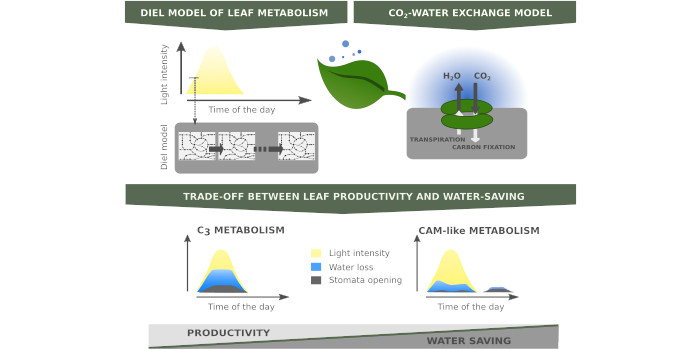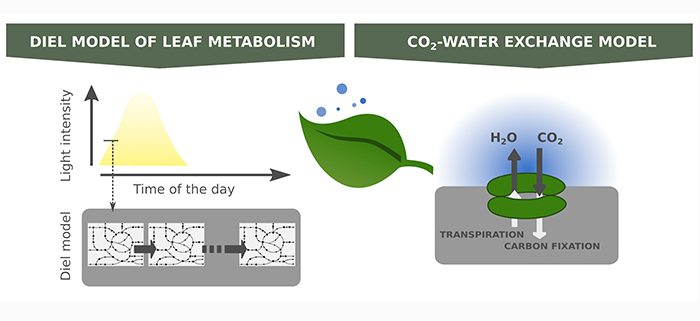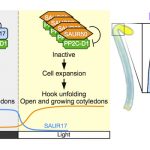Designing Drought Resistant Crops for Temperate Climates
By Nadine Töpfera and R. George Ratcliffeb
…..a Leibniz Institute of Plant Genetics and Crop Plant Research, Gatersleben, Germany
…..b Department of Plant Sciences, University of Oxford, South Parks Road, Oxford, OX1 3RB, UK
Background: During photosynthesis, plants take in CO2 from the environment and, with the help of sunlight, convert it into energy-rich sugars. CO2 uptake is regulated via the opening and closing of small pores on the leaf known as stomata. However, when stomata are open, water is lost from the plant through transpiration. Therefore, a balance must be struck between water loss and CO2 uptake. In C3 photosynthesis, the stomata open during the day when sunlight is available. This is energetically efficient, but results in significant water loss in environments with high daytime temperatures and low humidity. As an alternative, some plants can perform Crassulacean acid metabolism (CAM) photosynthesis, in which they open their stomata and temporarily fix CO2 at night when temperatures are lower and humidity is higher. They then release the fixed CO2 and refix it for sugar synthesis during the day while keeping the stomata closed. CAM photosynthesis is water-saving but less efficient.
 Question: Would full CAM or alternative water-saving modes be more productive in the environments typically experienced by C3 crops? To answer this question, we coupled a day-night model of leaf metabolism and a gas-exchange model and performed simulations for a wide range of environments.
Question: Would full CAM or alternative water-saving modes be more productive in the environments typically experienced by C3 crops? To answer this question, we coupled a day-night model of leaf metabolism and a gas-exchange model and performed simulations for a wide range of environments.
Findings: We found that, by running a partial CAM cycle, the plant could save more than 50% of its water while maintaining 80% of its maximum productivity in a temperate climate. Moreover, our model identified an alternative CAM cycle involving the mitochondrial enzyme isocitrate dehydrogenase (ICDH) as a potential contributor to initial carbon fixation at night. The additional water-saving effect of carbon fixation by ICDH can reach 11% of the total water saving for the conditions tested. We also found that the CO2 storage capacity in the leaf vacuoles was a limiting factor on the extent of CAM and would need to be increased to establish a CAM cycle in C3 crops.
Next steps: Our in silico predictions suggest engineering strategies for generating crop plants that are better equipped for current and future climates. Implementing these strategies and testing them in vivo will be required to establish the practicality of these strategies.




